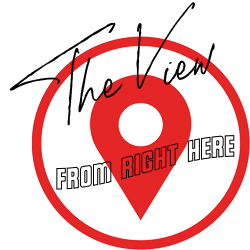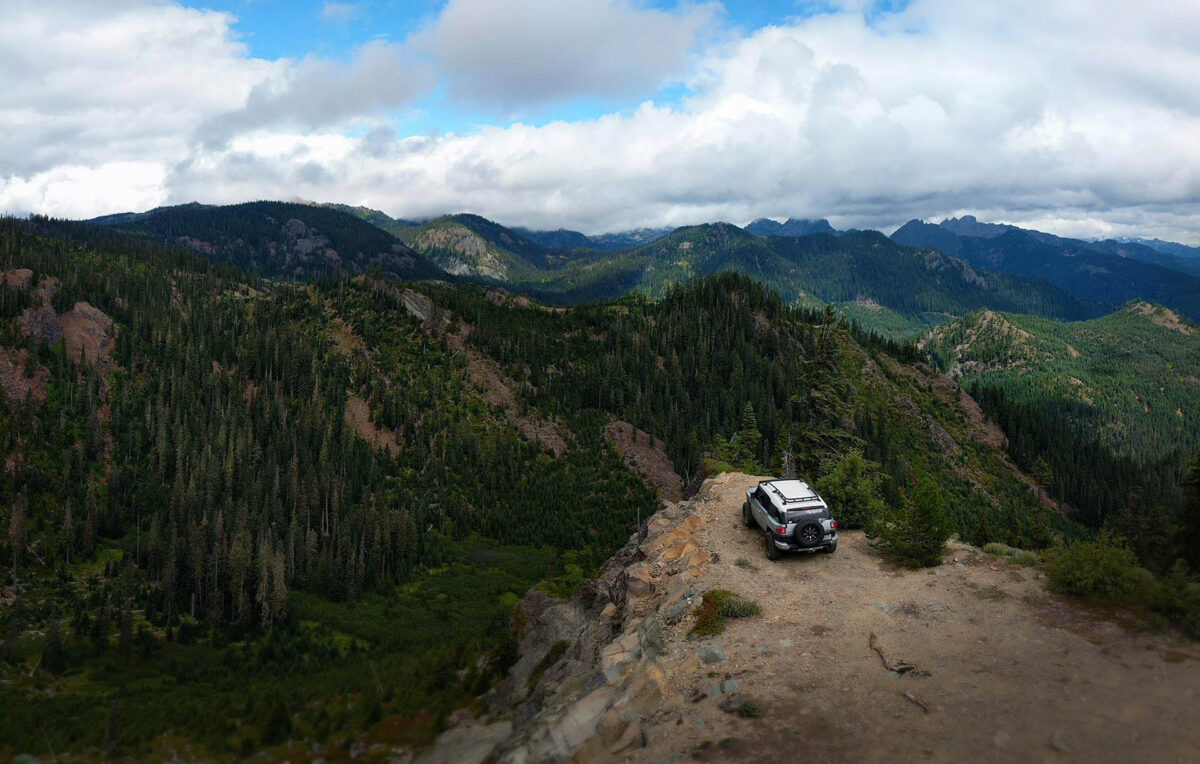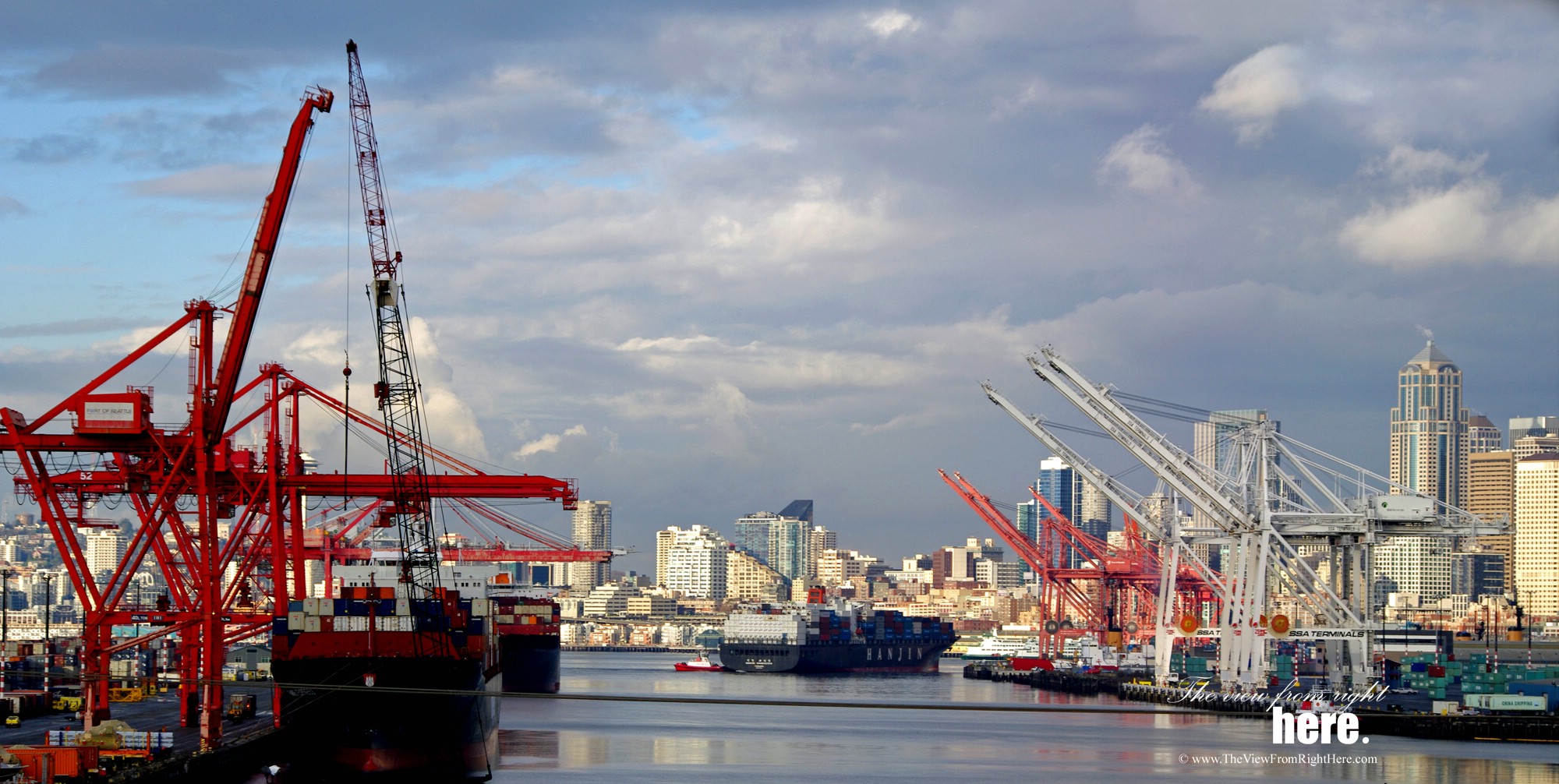
‘Berthing… at Pier 37…’ Seattle has one of the largest working ports in the United States. Large commercial ship traffic can be seen any day coming into/out of port, loading/unloading or sitting at anchor in Elliott Bay. The vessels are serviced 24/7/360, five days are observed as non-working holidays: Thanksgiving, Christmas, New Years, Labor Day and a holiday called ‘Bloody Thursday.’
‘Bloody Thursday,’ is observed on July 5th and is a non-working day in remembrance of a labor dispute in 1934. The strike closed all the ports on the west coast of the United States for 83 days. After a quiet 4th of July, several men were killed attempting to stand their ground in defiance of the police and association who ran the docks in California and were trying to open the docks for business on Thursday, July 5th.
Working on the waterfront was a fast-paced, stress-fill, but fascinating job. I worked for the Port of Seattle and Stevedoring Services of America for nearly twenty years; handling paperwork for cargo on Harbor Island (at Pier 18 where the ships are at berth in the left of the photo) and other docks (Piers 18, 20, 30, 37, 90 and 91) around the city.
Some of the more interesting things I handled as cargo over the years was shipping pregnant dairy cows to Indonesia. The longshoremen would clear the warehouse at Pier 20 of steel products, then a magnet attached to a forklift would be moved around the floor to pickup any small metal shards, straw would be strewn over the cement floor, water and grain troughs installed. The trucks would deliver the cows and they would rest several days in the warehouse prior to being loaded on board a ship for their overseas journey, which took about ten days.
Other things come to mind as well, a 20′ container of super balls that was damaged and when it was opened at the warehouse to recoup the cargo, the little 1″ balls came pouring out onto the dock. The longshoremen and those of us in the office who worked for the Port played with those for months (they were brand new to the market at the time and a hot selling item in the stores). Beautiful Chinese junks being delivered to truckers for delivery in the midwest for use on the Great Lakes. Shipping out the best eggs, apples, pears and grapes I’ve ever eaten to Kuwait, UAE, Saudi Arabia and Dubai. U.S. Customs K9 dogs sniffing cargo waiting to be either loaded into containers for overseas shipment or cargo unloaded from containers coming into the country to be delivered to truckers and ultimately their customers. The dogs would ‘point’ out cargo that contained drugs, which were then put under seizure and surveillance to arrest the customer who picked up the item(s). I remember seeing an imported engine block with cylinders filled with hashish. I’d better stop now, I could just keep telling you stories!



Thanks for the history! San Francisco dock workers had their own bloody day during the 1934 strike. It ultimately cemented the city’s commitment to unionism, though 30-40 years ago “City Fathers” made some bad decisions that ultimately moved most central coast shipping into Oakland. It’s sad because SF’s maritime history is rich.
I agree, sad, unions have changed our work environment sometimes for the better and sometimes not…
That is a huge port…I like the history
Seattle is probably typical of most port cities which have rich, long maritime histories… ;-)
Wow – very interesting – things I never would have thought of.
It was an interesting job… miss it a bit sometimes and the good pay.
That certainly is a busy port!
Yes… it is…
I never knew this, very interesting indeed. Great shot too.
Thanks, Randy…
First, it is a great photograph. Second, it is an interesting and informative explanation. And, third, the rest of the country is envious of this marvelous economic engine. If I knew how to move it to Hartford, I would.
Thankfully, we DO have a strong shipping industry here.. it does help keep Seattle afloat (no pun intended!).
Wow, great picture. It is a very busy port!
Thanks, Susan…
Love this sort of stuff, and a working port.
I do too… love ships and boats, a working waterfront…
Fascinating Madge! And a great working port shot!
Thanks, Paul….
Gosh Madge, that certainly wasn’t a boring job was it, how fantastic to work in a situation like that. It reminded me a bit of our Fremantle harbor, so busy with all sorts of vessels coming from all over the world! I really enjoy harbor shots like this.
No, Grace… it wasn’t boring… always something to keep the days full and interesting.
Love the information you provided with your photo Madge. Sounds like a fun-filled job (as much fun as a job can be anyway!)
It was an interesting, but stress filled job… I miss a lot about it, but not the stress, too many daily deadlines!
NO! Keep the stories coming! Those are very interesting! Thanks!
Thanks, Jim! ;-)
Your cargo port is huge and spectacular!
Thanks… ;-)
I always love the ports! What a beautiful picture.
Thanks, Jeroen!